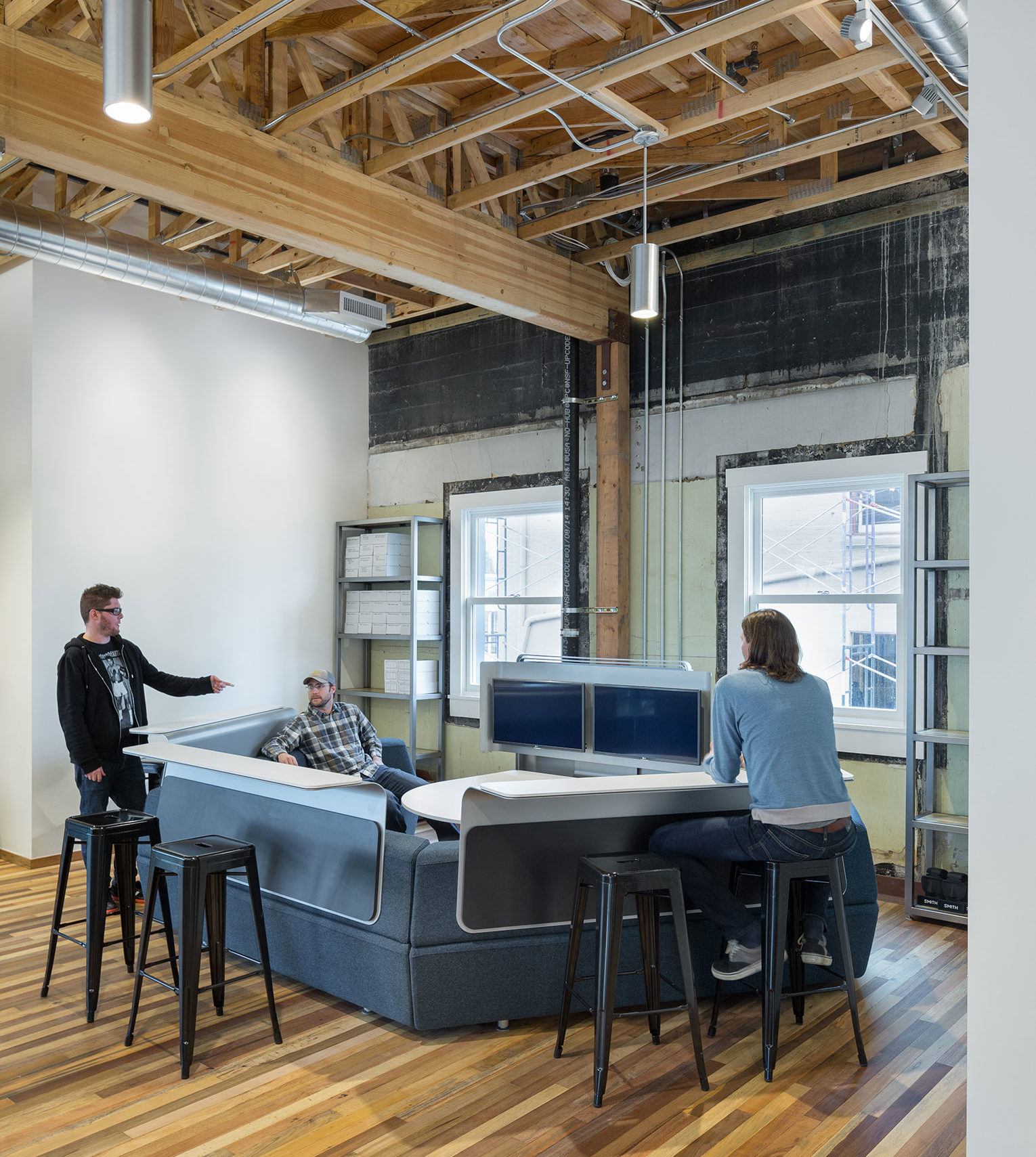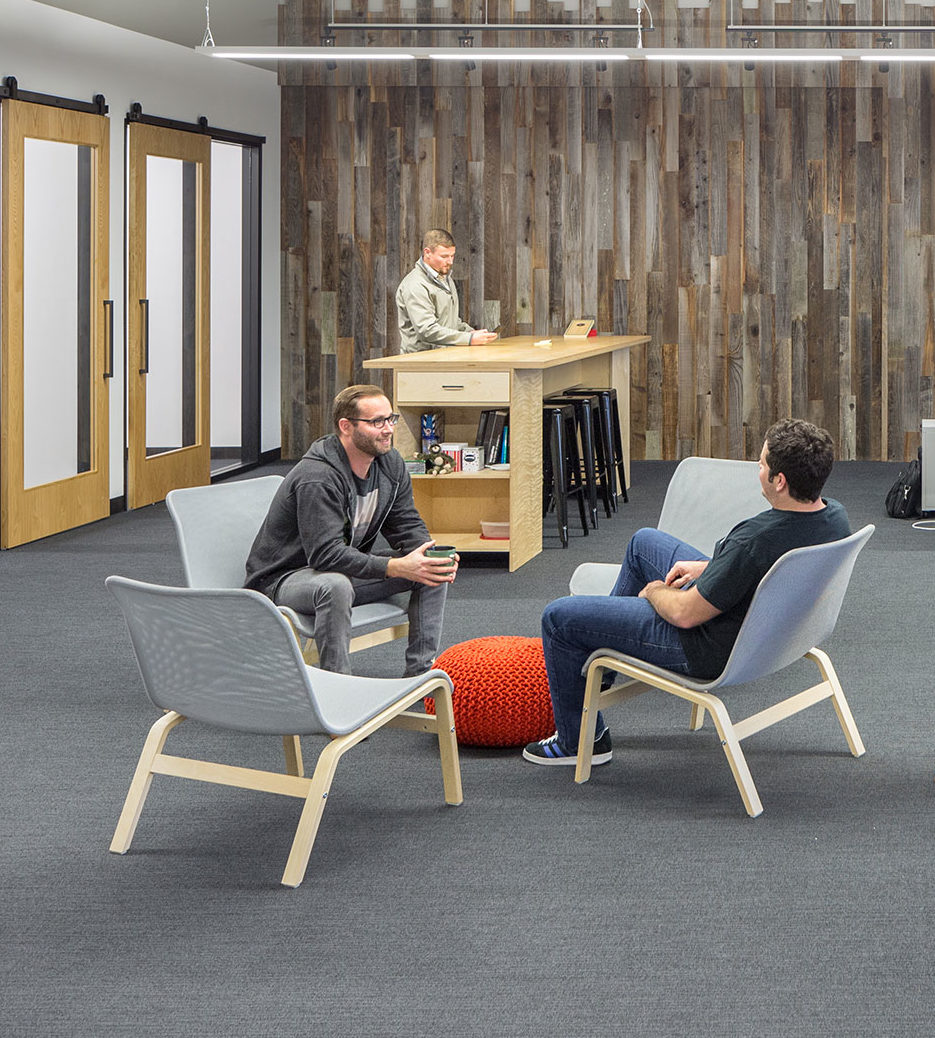For most of us, one-third of our lives will be spent at work. As much as we wish work stayed at the office, this often is not the case. The physical conditions, social connections, and emotions we experience while at work seep into our personal lives. This rings even truer now, as many of us are working from home in the face of COVID-19. Hopeful that a return to work will invoke a sense of normalcy, we must look toward designing new workspaces for a post-COVID era. FFA is re-thinking traditional workplace design strategies by considering new ways to keep workers happy, productive, and healthy.
One of the favored workplace design strategies — openness — reminds us of how the workplace has already changed in response to growing health concerns. While the trend toward a completely open office has already begun to fade, we still value the idea of openness through creating non-hierarchical spaces, a variety of flexible work environments, and space planning that encourages the sharing of ideas. With the increase in working from home as well as the need for maintaining physical separation while in the office, we must look at creative ways to maintain a healthy, open aesthetic.
Technology has played a huge role in our efforts to maintain a feeling of connection while people are compelled to stay socially distant. The integration of technology in the workplace will become even more important as the use of virtual meetings and presentations increases. Having adaptable technology throughout the office allows employees to physically spread out into different areas. There are numerous ways technologies like automatic sensors and voice activation can be incorporated – as simple as more priority given or attention paid to occupancy or proximity sensors for doors, lights, faucets, HVAC, etc. – to more complex commercial versions of at-home Smart Speakers that could call the elevator for the floor you want, turn on the projector or TV for a presentation, dim the lights, etc. The overall idea is to limit the number of surfaces multiple people touch. Companies who invest in ensuring their employees have both digital tools as well as necessary physical tools may be less impacted by the communication challenges we face.
A larger challenge is thinking about how to adapt our existing physical workplaces for current COVID-19 safety measures while looking ahead to maintain flexibility in the long term. The initial return to work will need to be well thought out, as a full return to “normal” will likely not be possible. We must think of solutions that provide separation while allowing people to collaborate safely. Our workplace design team expects an increase in bacteria-resistant and easy to clean furniture materials as well as the incorporation of more partitions to create physical separations between staff. It will be vital to plan our built environment in tandem with office policies such as alternating work from home days or setting specific walking patterns for staff to limit passing each other closely in hallways and other common areas. We want to ensure that we are providing for more stringent precautions now while making sure we will not need to completely rework the space again when the COVID-19 crisis has faded. Furniture arrangements that are flexible will allow employees to pivot how they work based on changing safety policies. Building in flexibility for the current emergency now will be valuable for companies to shift from unexpected situations in the future.
As we all transition back into our workplaces there is a unique opportunity to re-define a company’s identity. This crisis highlights the values we hold as individuals, businesses, and a society. Investing in the design of our workspaces provides agility and makes for happier living, at work and at home.





